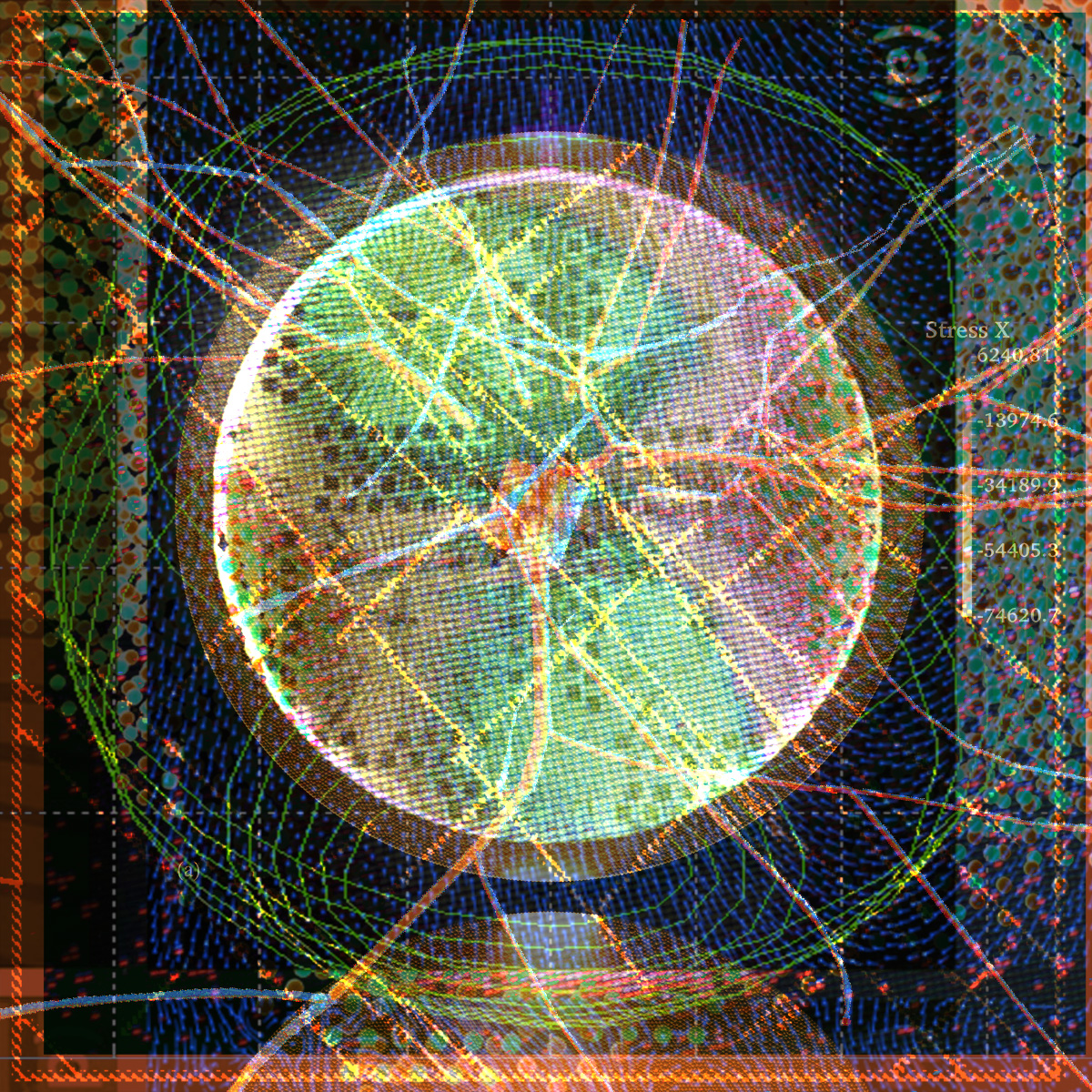Noösphere (2014 - 2021)
The Noösphere digital collages (2014 - present) draw on an extensive archive of source image files appropriated from the maths and sciences.
The source image files were indiscriminately downloaded from journals, research groups, scientists’ homepages, archives, and image libraries. Google Images was used to search for terms gleaned from popular science reporting, in a neverending hunt for lost pieces of the once and future noösphere. Those that met obscure, intuitive criteria were organized into folders based on form and composition with names like loopy lines, field lines, particle fields, waveforms, networks, trees, rings, grids, textures, etc.
During the editing process, the source images were rendered translucent, repositioned, inverted, recolored, and arranged in such a way that resonant layers seemed to merge and gain depth and color logic. An intuitive and chaotic “cut up” method of composition was augmented by a methodical recombinatory process in which source images were arranged in multilayer stacks and tried in various configurations until they were matched. Despite this processing, the original images were essentially left “as is” - no details were erased, painted over, masked, or edited from the final image.
This process displaces the images from a context in which they communicated specific information and were intended to have an authoritative, “correct” interpretation. By obscuring the signs that enabled their conceptual framing and disconnecting them from the cultural systems in which they were embedded, a subjective interpretation and open-ended visual experience is made possible. The source files were intended to provide answers, whereas the Noösphere collages ask questions in order to indirectly approach the unknowable.
Noosphere Supersymmetry Videos
Silent video created for "Supersymmetry" exhibition at Peephole Cinema, SF, 2018, curated by Lydia Greer.
Farley Gwazda’s Noösphere Motion Studies are layered video collages created from animated gif files appropriated from the STEM fields. Originally created as illustrations, these images were intended to have specific meanings to be interpreted narrowly. Through the specific compositional and narrative choices by which the artist re-presents these images, the potential for open-ended interpretation is restored.





